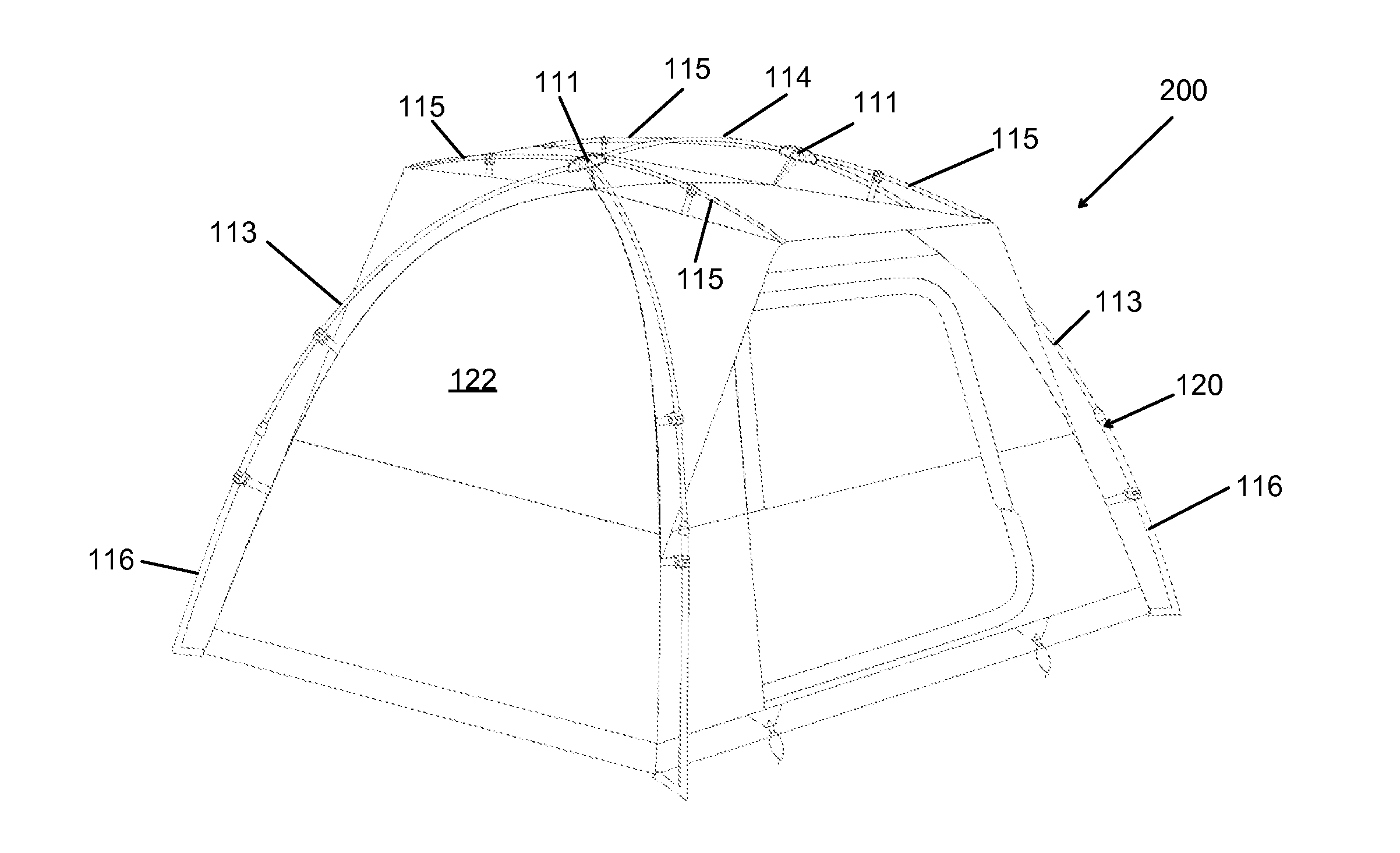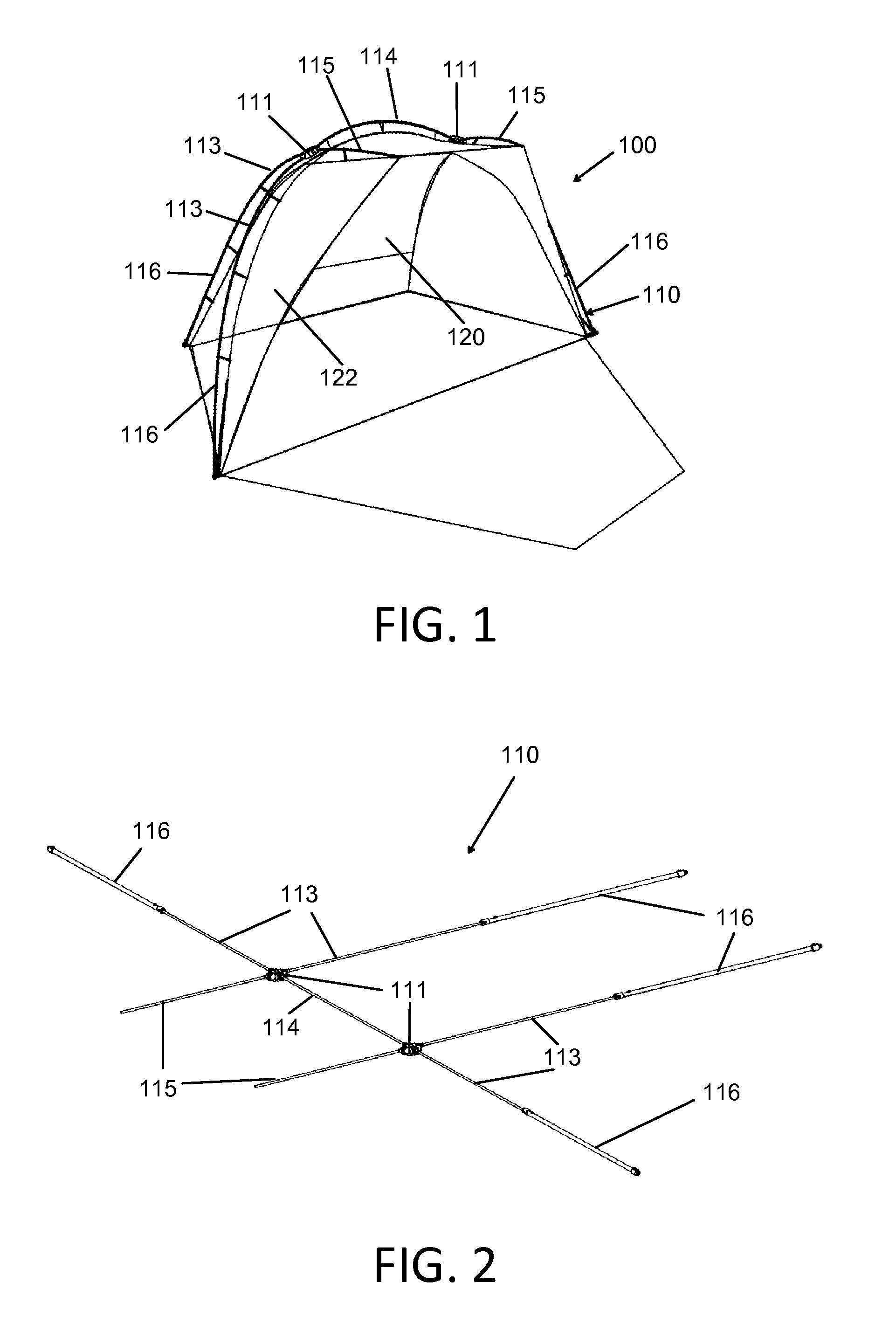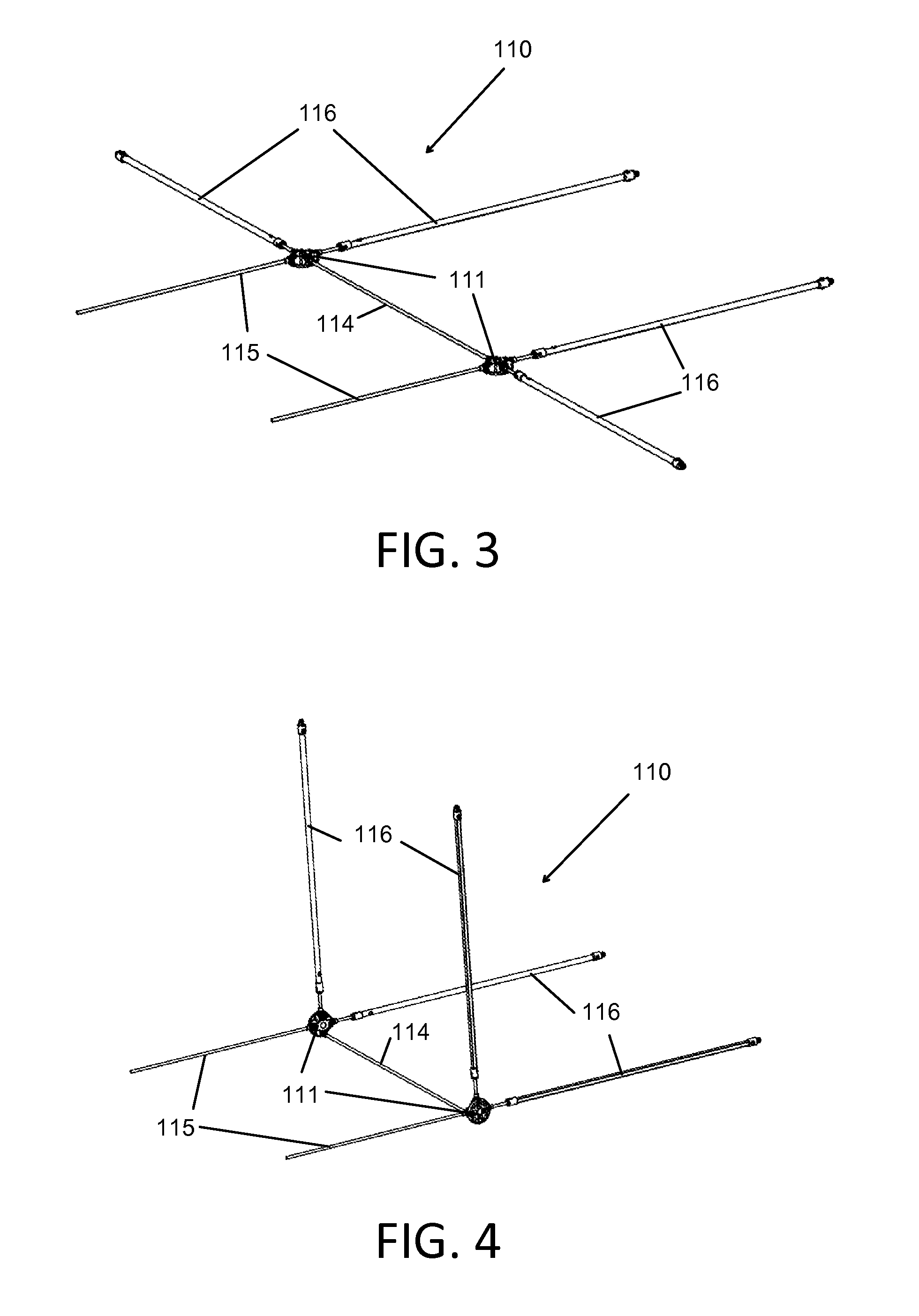Foldable Tent
a tent and frame technology, applied in the field of tents, can solve the problems of large stress on the frame assembly, limited size of instant tents in the prior art today, and the risk of damage or even failure of the central hub, so as to reduce the risk of damage or failure to the frame assembly, increase the head space, and increase the volume
- Summary
- Abstract
- Description
- Claims
- Application Information
AI Technical Summary
Benefits of technology
Problems solved by technology
Method used
Image
Examples
Embodiment Construction
[0035]Certain terminology is used in the following description for convenience only and is not limiting. The article “a” is intended to include one or more items. Where only one item is intended, the term “one” or similar language is used. Additionally, to assist in the description of the present invention, words such as top, bottom, front, rear, right and left are used to describe the accompanying figures. The terminology includes the words above specifically mentioned, derivatives thereof, and words of similar import.
[0036]Referring to FIGS. 1 and 7A, various embodiments of a foldable tent of the present invention are shown. Each of these embodiments include a frame assembly as illustratively shown in FIGS. 2-6 and 7-15, respectively, under which tent fabric is held and shaped to form portions of the tent, such as roof sections, side sections, sections with openings and / or windows, and eave sections, as shown in FIGS. 1 and 7A. Each of the frame assemblies in FIGS. 2-6 and 7-15, i...
PUM
 Login to View More
Login to View More Abstract
Description
Claims
Application Information
 Login to View More
Login to View More - R&D
- Intellectual Property
- Life Sciences
- Materials
- Tech Scout
- Unparalleled Data Quality
- Higher Quality Content
- 60% Fewer Hallucinations
Browse by: Latest US Patents, China's latest patents, Technical Efficacy Thesaurus, Application Domain, Technology Topic, Popular Technical Reports.
© 2025 PatSnap. All rights reserved.Legal|Privacy policy|Modern Slavery Act Transparency Statement|Sitemap|About US| Contact US: help@patsnap.com



